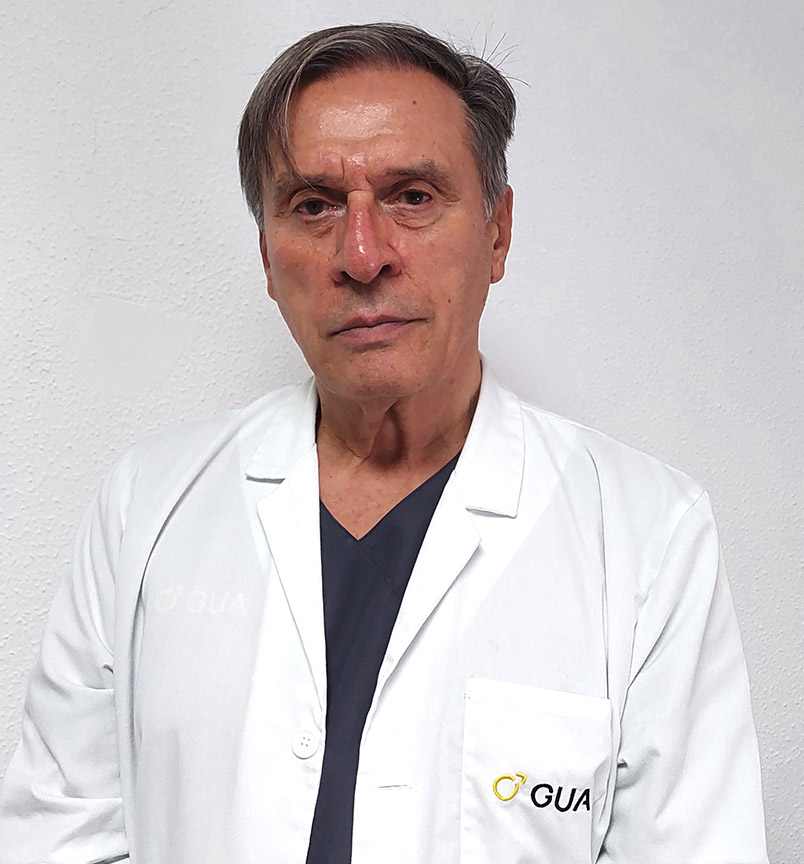
Erectile Dysfunction
Erectile Dysfunction, formerly called Coeundi Impotence, hence the term "impotence", is the lack of rigidity of the penis to perform sexual intercourse. We also speak of Erectile Dysfunction when erections are very fleeting or momentary, or when they are achieved with great difficulty or very rarely. This condition is more common than you might think. More than one million Spaniards suffer from it. Almost 40,000 Canary Islanders, as well as their spouses, suffer the consequences of this condition.
It is important to go to the first symptoms, which are almost always occasional failures, which are occurring more and more frequently, as in the early stages these problems are almost always reversible. Sometimes things stay there and the patient has a mild deficit for the rest of his or her life, and sometimes they get worse, with the failures becoming more frequent and more serious.
What are the causes of erectile dysfunction?
Impotence can be caused by a psychological problem or by an organic alteration of the circulation, of the transmission of the nervous impulse, of the hormones, by a disease of the cavernous body in its interior or in its coverings, by a toxic state, or by another disease. In our clinic located in Las Palmas de Gran Canaria we detect the cause and offer various solutions to this pathology.
It should be borne in mind that the patient who has an organic problem also tends to develop a psychological problem in relation to his rigidity failures: low self-esteem, lack of confidence in the response of his penis, insecurity in personal relationships. This psychological problem can aggravate the organic failure, and here we are talking about mixed-cause erectile dysfunction. It is very important to treat in a combined way in order to obtain better and earlier results.
How does erectile dysfunction manifest itself?
In a simple way, we could say that when the patient needs help from the hand to penetrate he has a moderate problem and when he cannot penetrate he has a severe problem.
Occasional presentation may be related to psychological or physical (penile) trauma. Progressive presentation is more likely to be due to an organic cause.
How is a diagnosis of erectile dysfunction made?
The main study is the one carried out in the same consultation room, by means of a medical history aimed at investigating the possible causes of erectile dysfunction.
A general physical examination of the patient is then carried out, particularly of all the genitalia, external and internal, and a very detailed examination of the penis. This is essential to see if there are any general or genital alterations.
Other important studies are the analyses, mainly blood tests, which will inform us if there are any health alterations (anaemia, metabolic alterations, kidney or liver failure, prostate lesions, hormone alterations, etc.) that cause erectile dysfunction as the first symptom.
The next level of study is called RIGISCAN, and consists of measuring the behaviour of the penis during sleep with a device. It differentiates psychological impotence from organic impotence, and can be of great help in assessing the types and severity of impotence. This study is usually essential for young people who have had the problem since their first sexual relations, although in older people it is becoming less important.
The last level is the vascular study, using colour Doppler-echo, which studies the functioning of the arteries and veins of the penis. It is sometimes complemented with contrast X-rays (cavernosography).
Similarly, GUA carries out the SHIM test, which defines whether or not there is a problem and to what degree. Regarding the degree of stiffness, the evaluation is carried out with the EHS test: Erection Hardness Score, which is complemented by comparing the stiffness obtained with a silicone model.
How is erectile dysfunction treated?
Psychic or psychogenic impotence requires psycho-sexological treatment, although drug therapy has proven to be effective in helping to resolve problems of insecurity. For this reason, we often treat it together in our centre.
When there is a cause within the body, we must correct it. Medical treatments manage to solve almost 60% of cases, and in another 20% of cases patients improve temporarily. When we have alterations of the sexual hormones, the treatments will be specific with hormones for each case. In the case of an infection, we must treat with antibiotics. We must always find the source of the problem in order to offer the best treatment.
How does an erection develop?
Faced with a sexual, visual, mental, tactile or even reflex stimulus, the erector nerves act on the corpora cavernosa of the penis, parallel cylinders that run along the penis, relaxing its musculature, allowing more blood to flow into it. At the same time, the arteries supplying the corpora cavernosa dilate, providing more blood.
The veins, which in a flaccid state return blood to the heart, occlude their outlets and the blood closes at high pressure in these cylinders. This pressure even exceeds the blood pressure when full stiffness is achieved.
What guidelines do we follow at GUA for the treatment of ED?
There is no need for in-depth studies if the problem can be solved with simple approaches. For this reason, in our centre the treatment is personalised, mixed and in a mobile pattern, and if the problem disappears, there is no need for further study. Sometimes a treatment leaves a patient at ease, with the problem definitively solved or having to take medication for each sexual intercourse. If there are no unpleasant side effects, this could be a solution without the need for further diagnosis. This would be a diagnostic impression, which in our practice fits the diagnosis of certainty in more than 90% of cases, especially in patients over 50 years of age.
That's why in our diagnostic process we often put a treatment in place while certain tests are coming in. We tell the patient that we must look for the dose at which they obtain satisfactory rigidity, and in our mobile guidelines that dose will always be the lowest and least toxic. On the other hand, if the response is not satisfactory, we must increase the dose, or go deeper into the diagnostic study.
Our specialists
Take care of your sexual health today! Don't wait any longer to schedule your appointment with our experts.





